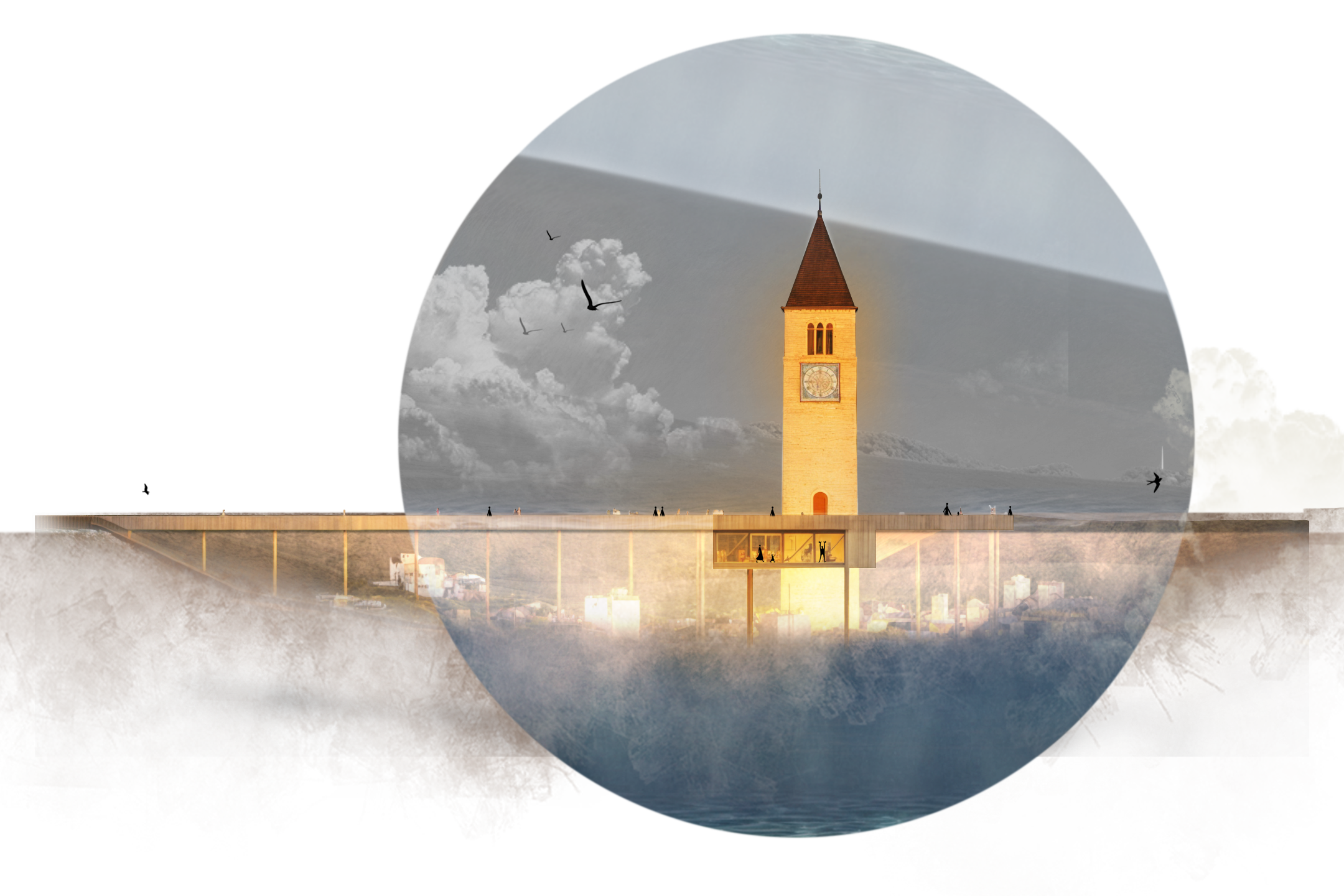
Name
The Bell Tower – Lake Resia
Type
Contest – Heritage
The project at Lake Resia seeks to pay tribute to the history and sacrifice of the community that once inhabited this valley, breathing life back into the site while respecting its unique essence.

The Bell Tower, the only visible remnant of the old town of Graun, stands as a symbol of both resilience and the scars of a past marked by loss. To preserve this exceptional visual feature, the new architectural interventions are carefully integrated into the landscape, remaining at water level so as not to compete with the solemn sight of the tower rising above the lake. Inspired by the outline of the old church, the proposal maps a symbolic recreation of the submerged city, forging a connection between past and present through cultural activities open to all who wish to engage in an experience that transcends the gastronomic.
Plan
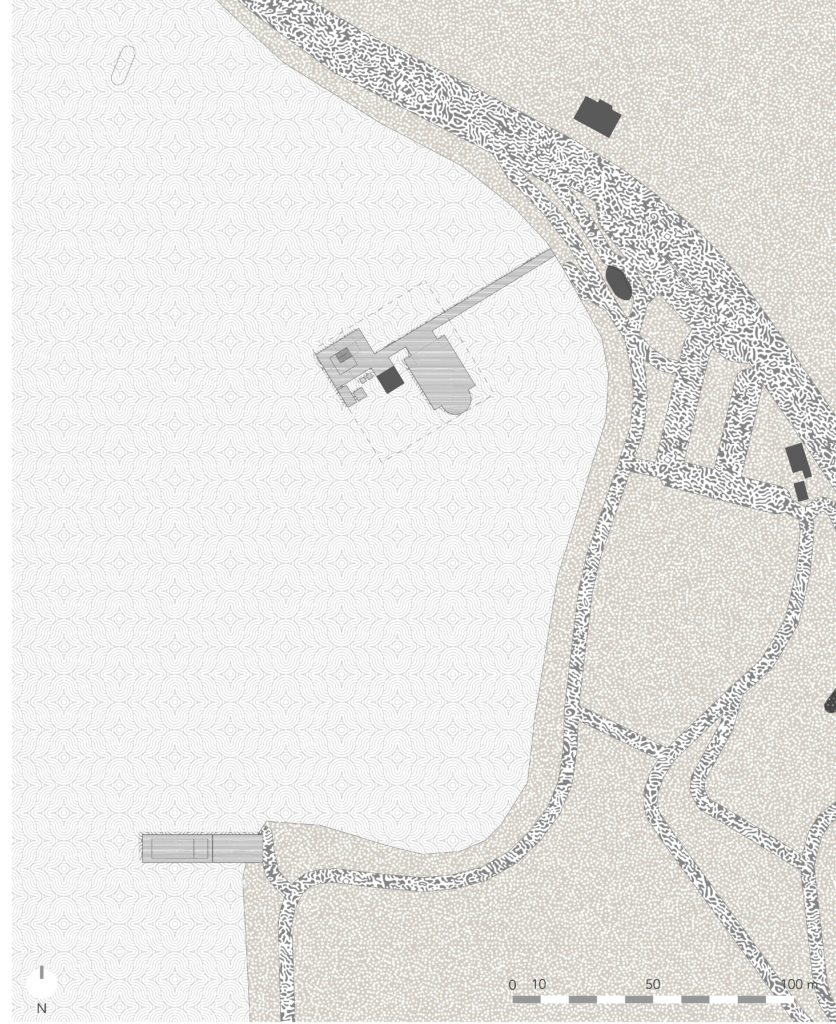
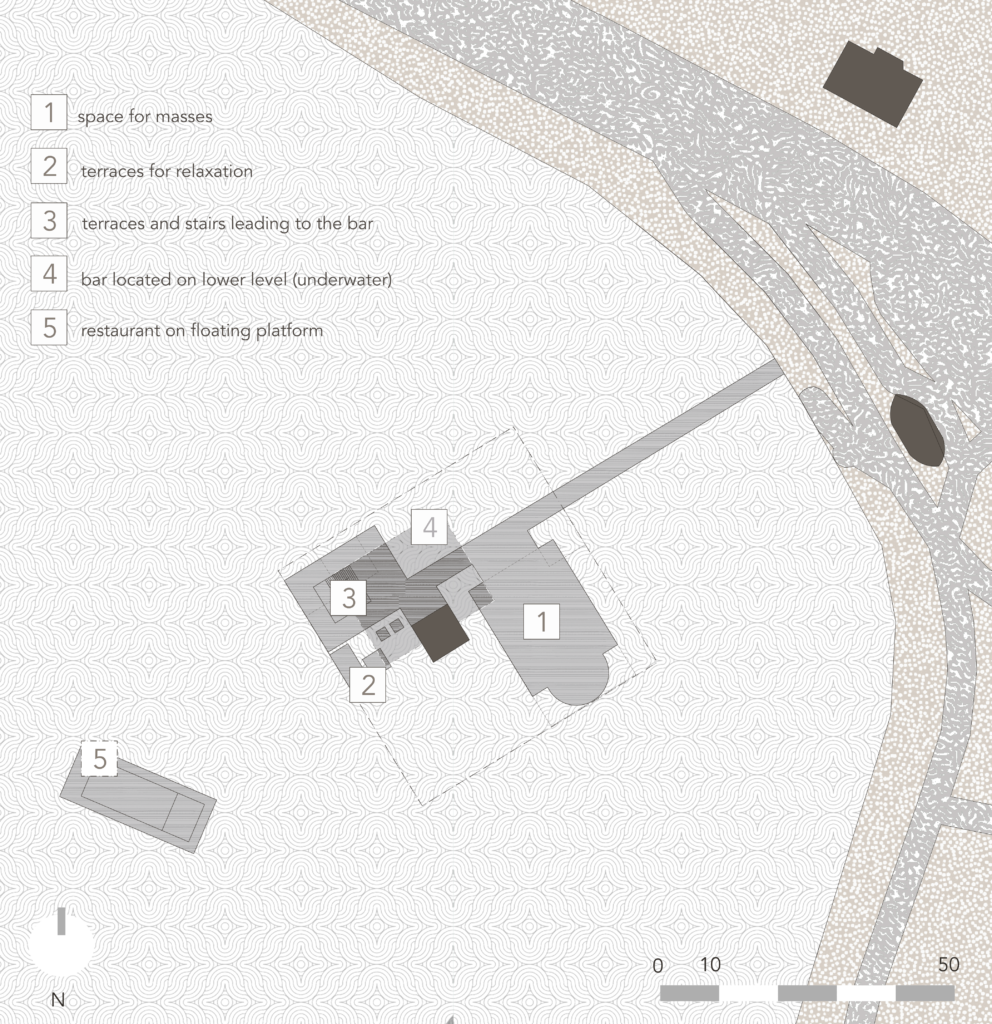
Design
The architecture flirts with the ephemeral, fostering a respectful dialogue with the natural environment. It employs local materials and sustainable technologies that reinforce ecological balance. On the surface, the structures reveal visible “scars,” textures, and forms that evoke the memory of collective sacrifice and the pain of a displaced community. Spaces are designed to celebrate this memory—places for religious ceremonies, quiet contemplation, and cultural events featuring poetry, dance, and music. A bar below the lake’s water level offers an immersive experience, allowing visitors to admire the tangible remnants of what was once a thriving town.
Additionally, a floating restaurant is proposed, amplifying the connection to history. Visitors can savor local cuisine while immersing themselves in the lake’s rich cultural and symbolic depth, navigating the very waters that hold the echoes of the past.
This project seeks not only to restore life to the lost city but also to highlight its history and sacrifice. It invites visitors to reflect on the impact of human decisions on communities, landscapes, climate change, and resilience. By honoring the past, the project aspires to build a future grounded in memory and hope, firmly rooted in the genius loci—the spirit of the place.
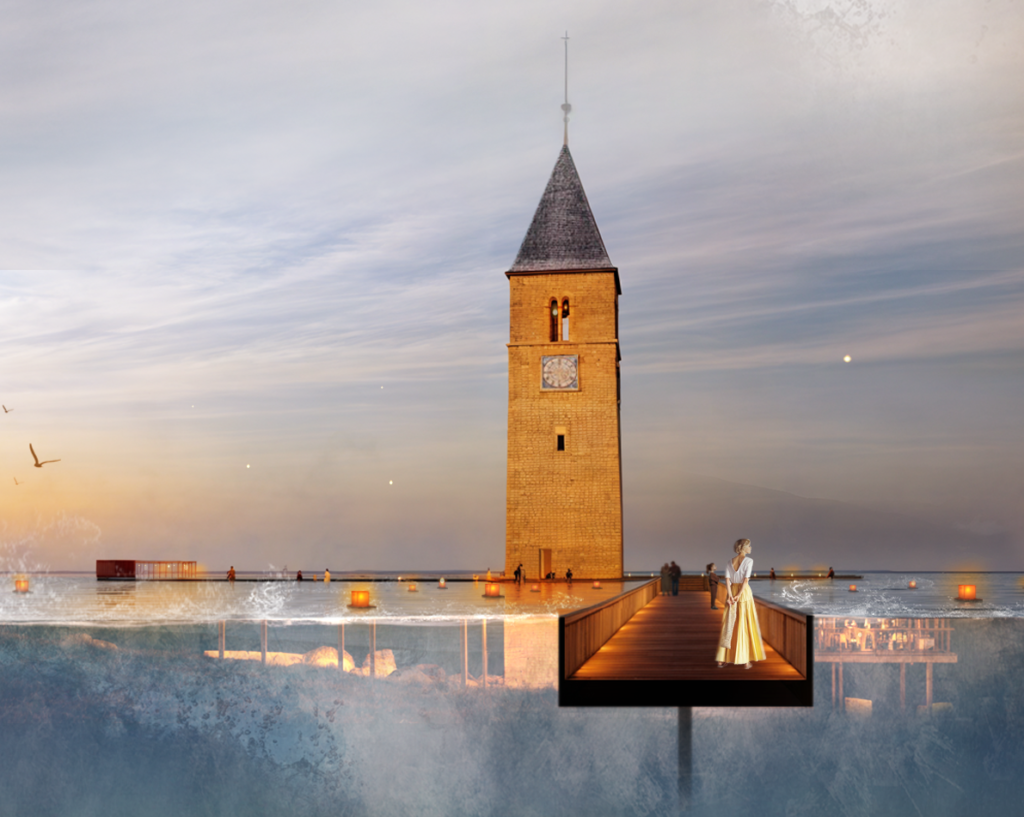
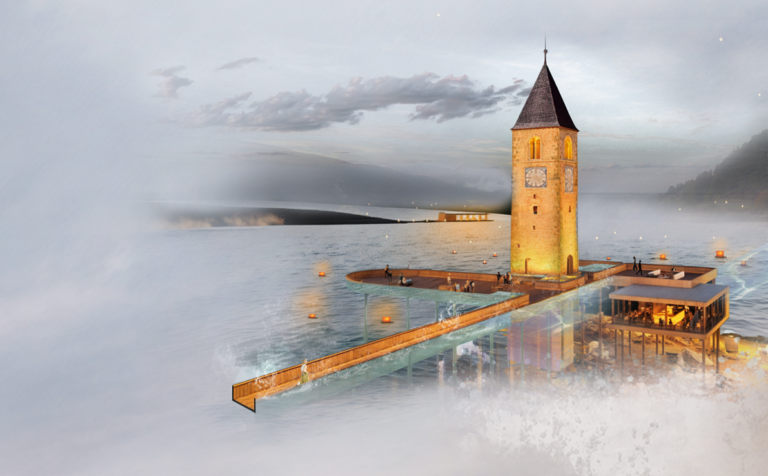
©2025 Ufficiis, All Rights Reserved

